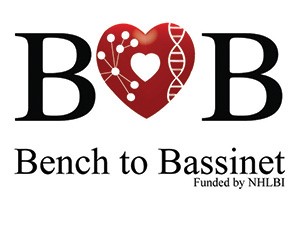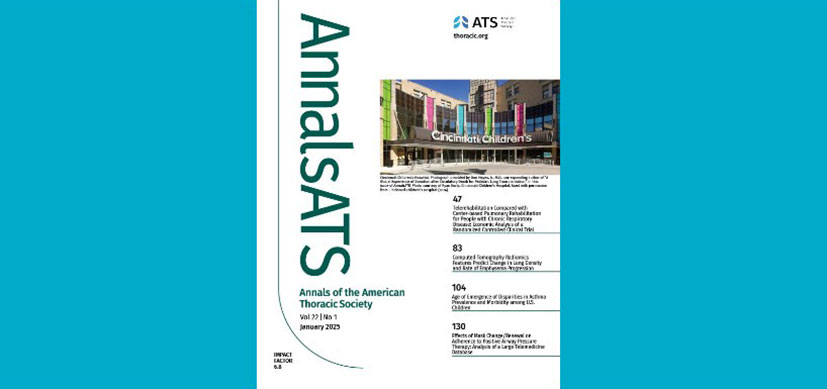Bench to Bassinet Data Hub Manages 250 Terabytes of ‘Big Data’
Post Date: June 30, 2019 | Publish Date: Winter 2017

$32.5 million grant gives Cincinnati Children’s a pivotal role in national cardiac genomic research

Team science arrived here in a big way in March 2016 when Cincinnati Children’s became the administrative coordinating center and data hub for the Bench to Bassinet (B2B) Program for cardiac research.
The $32.5 million, five-year grant from the National Institutes of Health is believed to be the largest single award ever received by the medical center.
Launched in 2010 and renewed in 2015, the B2B Program aims to accelerate research on the molecular basis of congenital heart disease, from discovery and translational research to clinical testing. The consortium encompasses three separate but intersecting initiatives that involve 17 research institutions and 26 auxiliary sites.
Eileen King, PhD, Peter White, PhD, and James Cnota, MD, MS, are spearheading work on the new project, which offers the medical center a central role in determining new directions for pediatric heart research.
Team Science on a National Scale
Congenital heart defects are the most common birth defect in the U.S., with about 40,000 children diagnosed each year. These complex conditions involve the interplay of multiple genetic and environmental factors, which makes them ideally suited to a team science approach.
Determining causes and developing new treatments will require extensive coordination between neuro-developmental biologists, cardiologists, geneticists, imaging specialists, and data scientists. The work requires support from regulatory experts, contracts and finance personnel.
In securing the grant, Cincinnati Children’s brought to the table its unique strengths in cardiac research, data management, a top-tier informatics infrastructure, and a strong advisory group comprised of senior leadership. In return, Cincinnati Children’s gains the opportunity to become closer working partners with the NIH and other national cardiac research leaders.
The award also offers the medical center an avenue to translate discoveries from the bench to the bedside—or in this case, the bassinet.
Coordinating Research, Aiming for New Discoveries
To date, the B2B Program has enrolled more than 10,000 children with congenital heart disease, along with nearly 14,000 parents and relatives.
Cincinnati Children’s will coordinate activities for two components of the project. The Cardiovascular Development Consortium conducts basic research with laboratory models to discover which genes are turned on and off during heart development. The Pediatric Cardiac Genomics Consortium uses genomic data from thousands of individuals to uncover genes that may cause congenital heart disease, and then studies how those genes influence clinical presentation.
The two groups are complementary. Genes implicated in human studies can be tested for contribution in laboratory models, and vice-versa.
King, Division of Biostatistics and Epidemiology, will lead the coordinating center’s efforts to provide infrastructure to enhance collaborations among program members. Her team, including Rachel Akers, MPH, and Nicholas Ollberding, PhD, will be responsible for operations, protocol development, core oversight and support, and data management.
“Team science has long been the norm at Cincinnati Children’s,” says King. “Now, being able to do team science not only within this institution but across the United States is a great opportunity.”
“Our goal is to support efforts across the project’s many sites and partners to create reliable data and reproducible results,” she says. “We want to be strategic partners, not just a pair of hands. We want to help set the strategic direction of the research team to assist with determining the priorities that are the most important to the clinicians, patients and their caregivers.”
King says the NIH funders chose Cincinnati Children’s in part because they were looking for a strong academic partner. They found one. Since July, Cincinnati Children’s has:
• Led development of a new protocol that will investigate the causes of neurodevelopmental disorders in heart patients
• Created new informatics dashboards
• Worked with the grant’s leadership team to make processes more efficient and ensure scientific rigor across the project.
“In research, as you reach the end of a study, the question is always, ‘Where do I go next?’ ” says King. “Our goal is to make sure those next steps are clear, by facilitating information sharing, joint meetings, and always keeping an eye on the big picture.”
Data Hub Deals With Very Big Data
As the program’s new genomic data hub, Cincinnati Children’s is collecting, integrating, and providing over 250 terabytes of molecular data to the cardiac research community.

“This is truly big data,” White says. “We will be pushing the limits on effectively managing, integrating, and analyzing this data. The goal is to design technologies and computational methods that will allow researchers to understand a very complex combination of molecular and patient observational data.”
Team members Michael Wagner, PhD, and Michal Kouril, PhD, are already working on new methods for storing and computing on large and complex data sets through cloud technologies. Wagner’s group also is further developing HeartsMart, a data application for querying and reporting cardiac data that will be adapted to the cloud and expanded with a user-friendly public interface.
“The vision is, with this data, we will eventually be able to perform a genetic profile on a new patient with heart disease and use those results to better predict the course of their illness, as well as to target surgical and postsurgical interventions,” says White.
The Promise of Precision Medicine
The Bench to Bassinet Program ultimately aims to blend genomic and clinical research. In addition to the two basic science projects, the B2B Program includes the Pediatric Heart Network. Established in 2001, this network represents a group of pediatric cardiovascular centers conducting clinical research. Cincinnati Children’s has been a research site for this project since 2006.
James Cnota, MD, MS, Heart Institute, leads our involvement in the Pediatric Heart Network project. Now he also serves as Medical Director for the administrative coordinating center. In that role, he aims to bring the perspective of clinicians, patients and caregivers to inform research programs and study designs.
“Developmental biologists who study animal models, geneticists, and clinicians all complement each other, as each looks at problems differently,” Cnota says. “When our abilities are combined, we can achieve novel insights. We need to learn each other’s languages and work together to make progress and take advantage of all those strengths.”
The payoff from the team science approach will be better outcomes for patients.
“We need a better understanding of the causes of heart defects,” he says, “but we also need to understand the role of the genome in predicting medical and surgical outcomes and the long-term course of disease.”
“Even between patients with the same anatomic diagnosis, we see a lot of variation in the response to standard treatments. With a better understanding of these differences, we can tailor treatments in more personalized and precise ways.”
In the latest funding round, experts in the heart network are especially interested in investigating the high incidence of neurodevelopmental disabilities in children with severe heart defects. The researchers plan to study the genomes of congenital heart disease patients who develop poor neurological outcomes to uncover genetic mutations that affect both heart and brain development.
“With clinically-oriented questions like this,” Cnota says, “we should see research outcomes that inform and guide the care of our patients.”
—By Jill Schlabig Williams
(This article originally appeared in the Winter 2017 issue of Research Horizons







